Toward the state-led Jeju 4‧3 Trauma Center: An approach to enable social healing of wounds from Jeju 4‧3
Toward the state-led Jeju 4‧3 Trauma Center:
An approach to enable social healing of wounds from Jeju 4‧3
Oh Seung-guk, Chief Editor, Former Vice Director of the Jeju 4·3 Trauma Center
The operation of the Jeju 4·3 Trauma Center began in May 2020 as a pilot project. Using the regional experience as a springboard, the South Korean government plans to operate a national trauma system in Gwangju and Jeju, starting from early in 2024, for the surviving victims of state violence. Initially, the government hoped to evenly share the burden of budgeting the operational expenses with the relevant local municipalities. Although its stance has been revised, the project will likely make a shaky start as the planned budget for the project, which was to be 100 percent funded by the national government, has been significantly cut. According to the Ministry of the Interior and Safety, the Ministry of Economy and Finance has allocated only 65 percent of the budget requested for the operation of the state-led trauma healing center, which will be established next year on the site of the former Gwangju Armed Forces Hospital.
Since the trauma healing center is planned to have a regional branch in Jeju as well, the reduced budget will have an inevitable impact on the operation of the Jeju center. The Gwangju headquarters and the Jeju regional office will be allowed to employ a staff of 13 people, respectively, with the final bill determined to secure only 1.6 billion won out of the 4.6 billion won budget requested by the Ministry of the Interior and Safety.
Despite the same number of operational staff to be appointed to each center, the Gwangju headquarters will be given a higher ratio of the budget. There are concerns that if the budget cut by the Ministry of Economy and Finance is reflected as it is, the Jeju branch will have to cut staffing or drastically reduce its programs. Taking this into consideration, the Ministry of the Interior and Safety will work to restore the original budget during the National Assembly deliberations on next year’s government budget, scheduled for the end of 2023.
The Jeju local municipality is also planning to build the Jeju 4·3 Trauma Center in the unused section of the Jeju 4·3 Peace Park, as part of the project to revitalize the park dedicated to the resolution of Jeju 4·3. The facility of two floors and one basement with a total area of 1,500 ㎡ will feature psychological and physical therapy rooms as well as group and individual counseling rooms, designed to support the survivors of Jeju 4·3 and the bereaved families of deceased victims who have suffered from trauma. Following the national and provincial plans, the Jeju-based center will be open in two different regions, one in the downtown area and the other in the Jeju 4·3 Peace Park. For increased accessibility, the therapeutic programs will be offered primarily at the office in the downtown area.
Jeju 4·3, a symbol of state violence

The raison d’être of the state is to maintain public order, pursue the interests and happiness of its citizens, and ultimately achieve the common good of society. Despite this primal definition, however, history is littered with painful memories of violent acts committed by the state.
Specifically, South Korea experienced a series of state violence and abuse of power while struggling through the establishment of its post-liberation government, the Korean War, military dictatorship, judicial murder, extrajudicial killings, disappearances, repression using torture and the ‘Red’ complex, and disastrous accidents. The resulting pain and the wounds have caused a deep trauma to the people to this day, hindering the transition to true democracy.
Healing the trauma from Jeju 4·3, one of the most heinous acts of state violence, is the final process of correcting the past wrongdoings by revealing the painful truth. It also ensures the fulfillment of the state’s fundamental obligation to pursue a democratic unity going beyond the trauma from the past.
The trauma suffered by those who have experienced or witnessed the horrors of death remains with them long afterward. Therefore, healing Jeju 4·3-related trauma should not be a long voyage into oblivion, but a solution to historical memory, prioritizing social healing.
Trauma center established following the President’s pledge
In May 2020, the long-awaited Jeju 4·3 Trauma Center opened to provide psychological and physical healing to victims of state-led projects, including survivors of Jeju 4·3, bereaved families of Jeju 4·3 victims, and residents of Gangjeong Village. Through its intense healing programs, the center has established a social healing model for the realization of a sustainable and peaceful environment on Jeju Island while improving the quality of life of its residents and fostering a sense of community.
In 2003, the local community of Jeju began discussing trauma from Jeju 4·3 at a conference organized by the Jeju 4·3 Research Institute. It was first initiated by Rep. Kang Chang-il in the National Assembly, and later materialized in consultation with the government to feature a metropolitan mental health center, a program of the Ministry of Health and Welfare.
In 2020, President Moon Jae-in delivered his memorial speech at the Memorial Ceremony for the 72nd Anniversary of Jeju 4·3, where he promised his full support to elevate the status of the regional trauma center to a national one. He had previously pledged to establish the Jeju 4·3 Trauma Center during the 70th anniversary event.
For four years since its establishment, the Jeju 4·3 Trauma Center has been piloted with the trauma center based in Gwangju, now scheduled to be upgraded to a national center. The operation of the Jeju 4·3 Trauma Center has relied on the Jeju 4·3 Peace Foundation, with the operating costs funded evenly from the national and local government budgets. Currently, more than 17,000 survivors of Jeju 4·3 and families of deceased victims need assistance for the healing of their trauma. Reports suggest that 39.1 percent of the survivors and 11.1 percent of the bereaved families are at high risk for post-traumatic stress disorder symptoms, calling for swift actions for treatment. Those in need of trauma healing include 70 victims of Jeju 4·3 with residual disabilities, 30 victims of unlawful imprisonment during Jeju 4·3, 13,297 first-generation descendants of Jeju 4·3 victims, 2,881 daughters-in-law of Jeju 4·3 victims, and an estimated 1,000 victims of manipulated espionage cases for ideological purposes as well as of state projects such as the naval base establishment in Gangjeong Village.
The indiscriminate counterinsurgency operations practiced across Jeju Island have left an indelible pain for the people of Jeju including the survivors even after 75 years have passed. These lingering historical wounds are often passed down to the coming generations, which may broaden the scope of those with trauma to include second-generation descendants of the victims.
A shelter offering comfort and healing with systematic programs
 +++ A Jeju 4·3 story-telling program.
+++ A Jeju 4·3 story-telling program.
Since its establishment, the Jeju 4·3 Trauma Center has focused on the following key areas to execute its operational goals:
First, it has worked for the mental and physical healing of Jeju 4·3 victims and their families, as well as the mental healing of victims of national projects, with the goal of healing the victims of state violence in the historical, cultural, and social context and realizing a peaceful community on Jeju Island.
Second, the center has run programs on the integrated management of cases in conjunction with community services to create a sense of communal solidarity, while networking with Jeju 4·3 activists and mental health professionals and expanding national and international exchanges and cooperation.
Third, the center has promoted trauma surveys, support projects, and academic research to prevent traumatic events and hold the state responsible for any such cases.
For the past four years, the center has provided individual, family, and group counseling, educational courses on psychological healing, healing programs using arts (paintings, literature, music, gardening, and meditation), outdoor therapies through visits to forests and historical sites of Jeju 4·3, and physical exercises for healing purposes.
The experts at the center also began to address the difficult task of healing the trauma of residents of Gangjeong Village. Through trust-building with the village’s self-generated groups such as the Village Self-Governing Association, the center was able to approach more than 200 members of the Gangjeong Women’s Association and the Gangjeong Senior Citizens’ Association. Specifically, the villagers participated in the program to boost positive psychology, the trips to Jeju 4·3 historical sites, the preparation of shared meals for healing purposes, and the forest healing programs.
In addition, efforts have been made to establish a system of weekly and monthly structured healing programs. The programs adopted the media of literature, music, gardening, meditation, and storytelling of Jeju 4·3, sequentially on each day of the week, while psychological counseling and kinesitherapy were conducted routinely.
The Jeju 4·3 Storytelling Program, which was held every Friday morning, allowed Jeju 4·3 victims and survivors to release their memories of suffering, demonstrating the center’s major function of healing trauma through the encouragement and support from participants.
In 2024, the center traveled to rural areas to increase the accessibility to its healing and quality psychological counseling services, receiving accolades from Jeju 4·3 victims and their families.
The various healing programs available at the Jeju 4·3 Trauma Center offer both mental and physical therapies that help maintain the perfect equilibrium inherent in the human body and return to that equilibrium when lacking balance.
It is human nature to want to be healthy, but it is up to humans to fulfill the prerequisites for these programs to work effectively. People fall ill when they are out of balance and can get better when rebalancing their autonomic nervous system with a positive mindset.
The Jeju 4·3 Trauma Center’s psychological counseling and unique healing programs are designed to help people find the perfect equilibrium inherent in their body.
 +++ A kinesitherapy program.
+++ A kinesitherapy program.
In addition, through continuous research on collective trauma, the center has actively raised public awareness of the need to prevent state violence and worked with local and international communities to prevent national violence. It has also performed policy functions to spread warm, peaceful mood throughout the community by focusing on historical, cultural, and social healing.
Over the past four years, the Jeju 4·3 Trauma Center has created an enthusiastic space with more than 1,500 registered users and 58,400 cumulative visitors. In a short period of time, the center established itself as a model for trauma center operations in Korea.
‘We owe our presence to you who have survived the times of suffering’
The center’s achievement was made possible by its staff members, healing program instructors, and network volunteers, who have passionately striven to walk the path of healers with the motto, “We owe our presence to you who have survived the times of suffering.”
The case of the Jeju 4·3 Trauma Center sets a meaningful example as its operation involved no accident even during the height of the coronavirus pandemic. This is due to its compliance with the national and municipal guidelines to tackle the disease, strictly prioritizing the personal and spatial quarantine rules.
The successful operation of the Jeju 4·3 Trauma Center confirms that Jeju 4·3 victims, survivors, and Gangjeong Village residents have eagerly anticipated the establishment of a trauma center. It also proves that the indiscriminate counterinsurgency operations against Jeju residents during Jeju 4·3 has left an unforgettable psychological trauma even after 75 years have passed. Hopefully, the planned national trauma center will inherit and complement the meaningful achievements of the Jeju 4·3 Trauma Center and serve as a hospitable gathering place for its users, establishing a model of a Jeju-type trauma center.
Jeju 4·3: An immortalized chapter in history written with tears
Jeju 4·3, the tearful, unspoken chapter in history that has been taboo for many years, is still hovering around Jeju Island, hidden behind the beautiful landscape of Halla.
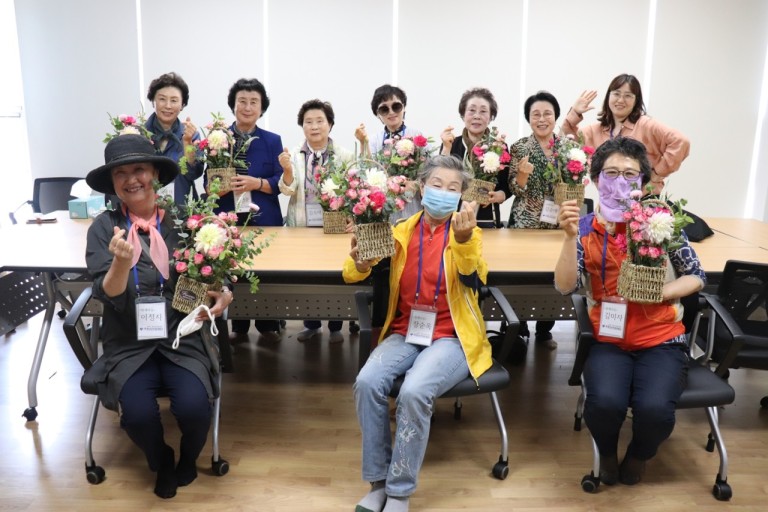
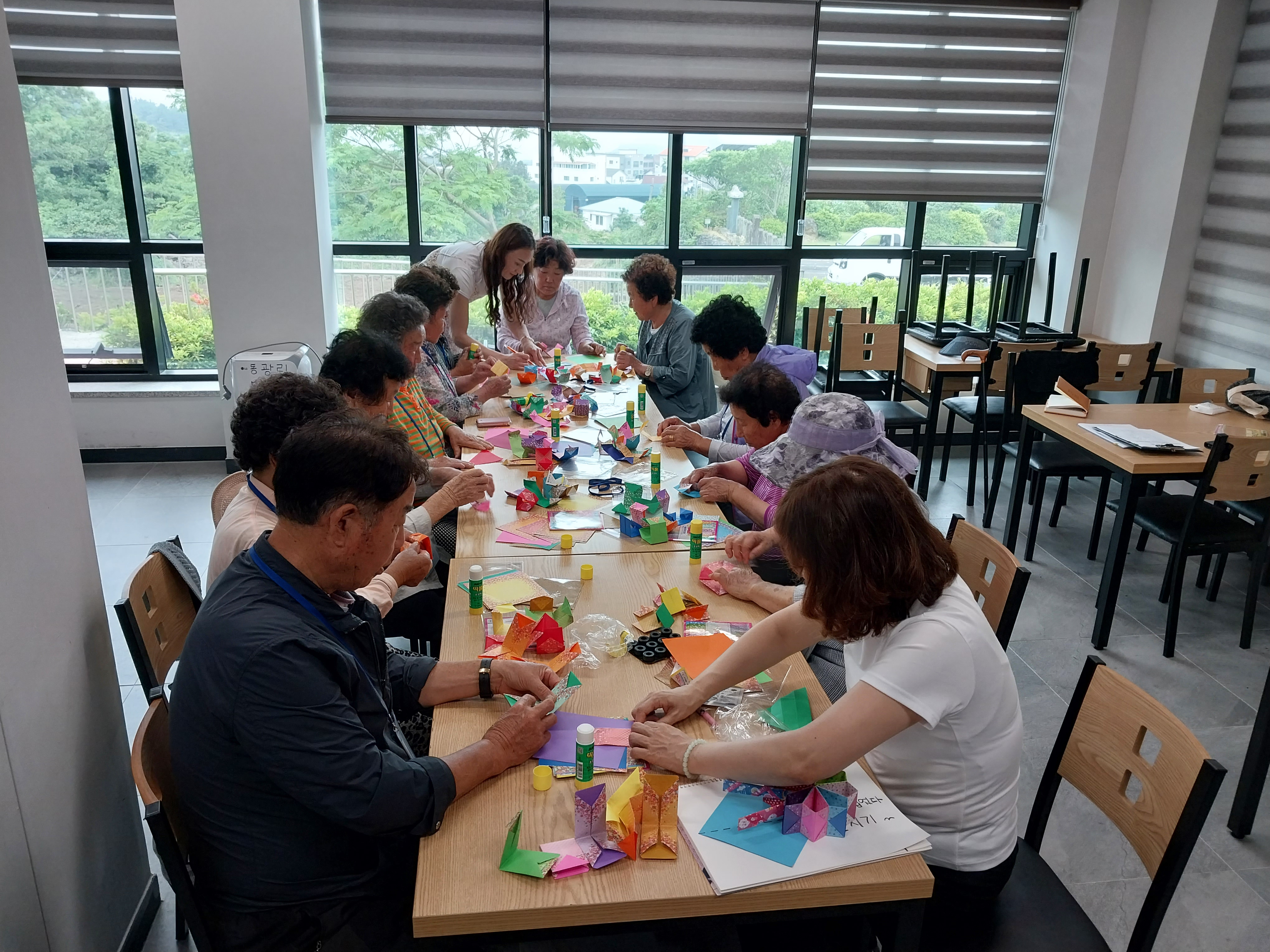
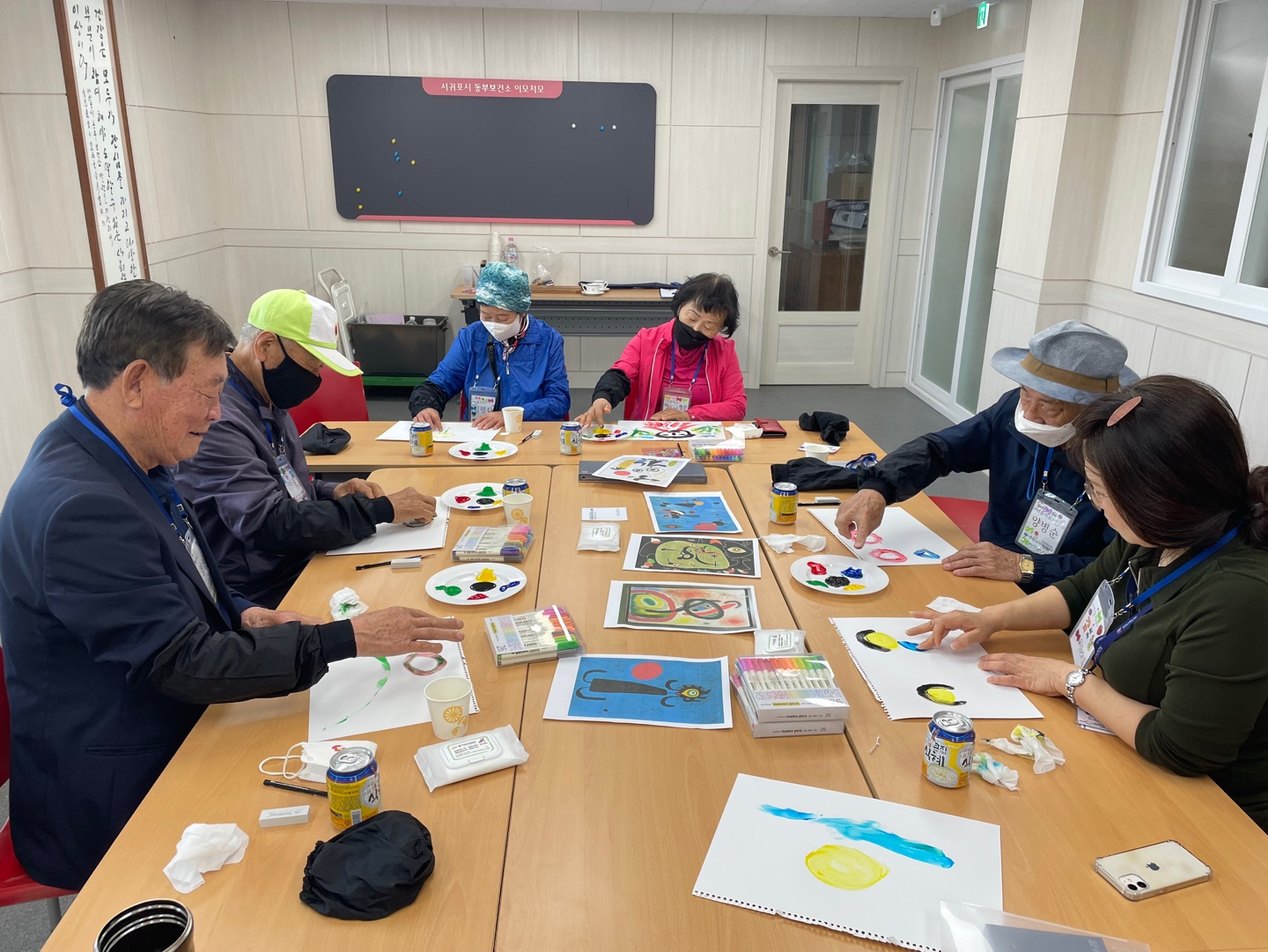 +++ A horticultural healing program (top).
+++ A horticultural healing program (top).
+++ An art therapy program (middle).
+++ A psychotherapy program(bottom).
Seventy-five years ago, the beautiful island of Jeju located off the southernmost tip of South Korea, saw the massacre of innumerable residents by state forces consisting of soldiers, police, and the Northwest Youth League, as well as the burning of countless houses in villages at high altitudes and the resulting massive property damage. More than 25,000 residents out of the-then population of 270,000 people lost their lives, with some 130 villages burned to ashes. Given that the tragedy took place in a non-wartime environment, the Jeju case of 10 percent of the island’s population massacred by state power is one of the rarest in world history.
Jeju 4·3 has led to unbearable suffering on the people of Jeju Island and is a tragedy that caused the second-largest damage following the Korean War in contemporary Korean history.
The survivors of Jeju 4·3 and the bereaved families of deceased victims have suffered unspeakable hardships and tribulations, including human and material damage and the destruction of the Jeju community. And the decades-long suffering has indescribably deep scars on the people and society of Jeju Island throughout the 20th century. Nonetheless, they have worked tirelessly to move past the difficulties with the spirit of reconciliation and coexistence.
As a result of these efforts, the Special Act on the Investigation of Jeju 4·3 and Restoration of the Honor of the Victims (“Jeju 4·3 Special Act”) was enacted in 2000, and the national government confirmed the Jeju 4·3 Incident Investigation Report, defining the case as a human rights violation by state authorities.
In 2003, President Roh Moo-hyun made the first public apology for the wrongdoings of the state, followed by the declaration of the commitment to turn Jeju into an island of peace, the recognition of those killed during Jeju 4·3 and their families as victims, the creation of the Jeju 4·3 Peace Park and the Jeju 4·3 Peace Memorial Hall, the exhumation of victims’ remains, the establishment of the Jeju 4·3 Peace Foundation, and the designation of April 3 as a national memorial day for Jeju 4·3 victims.
The full revision of the Jeju 4·3 Special Act was enacted and promulgated in 2021, while courts started acquitting victims of unlawful imprisonment. Compensation for Jeju 4·3 victims also began in earnest. The history of Jeju Island’s suffering, which had been stained with marginalization and pillage, has justly been established as the history of truth recognized by the state.
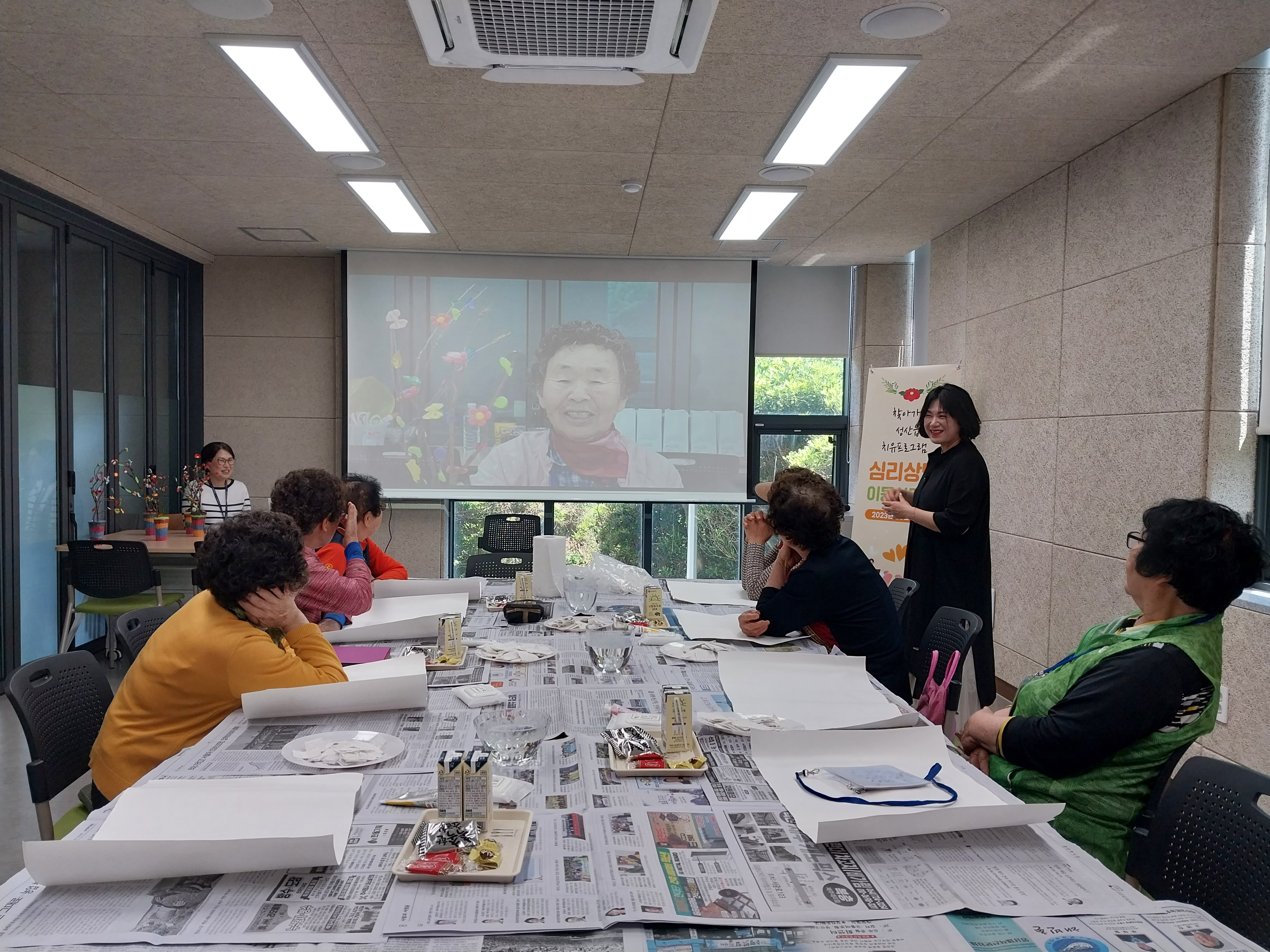
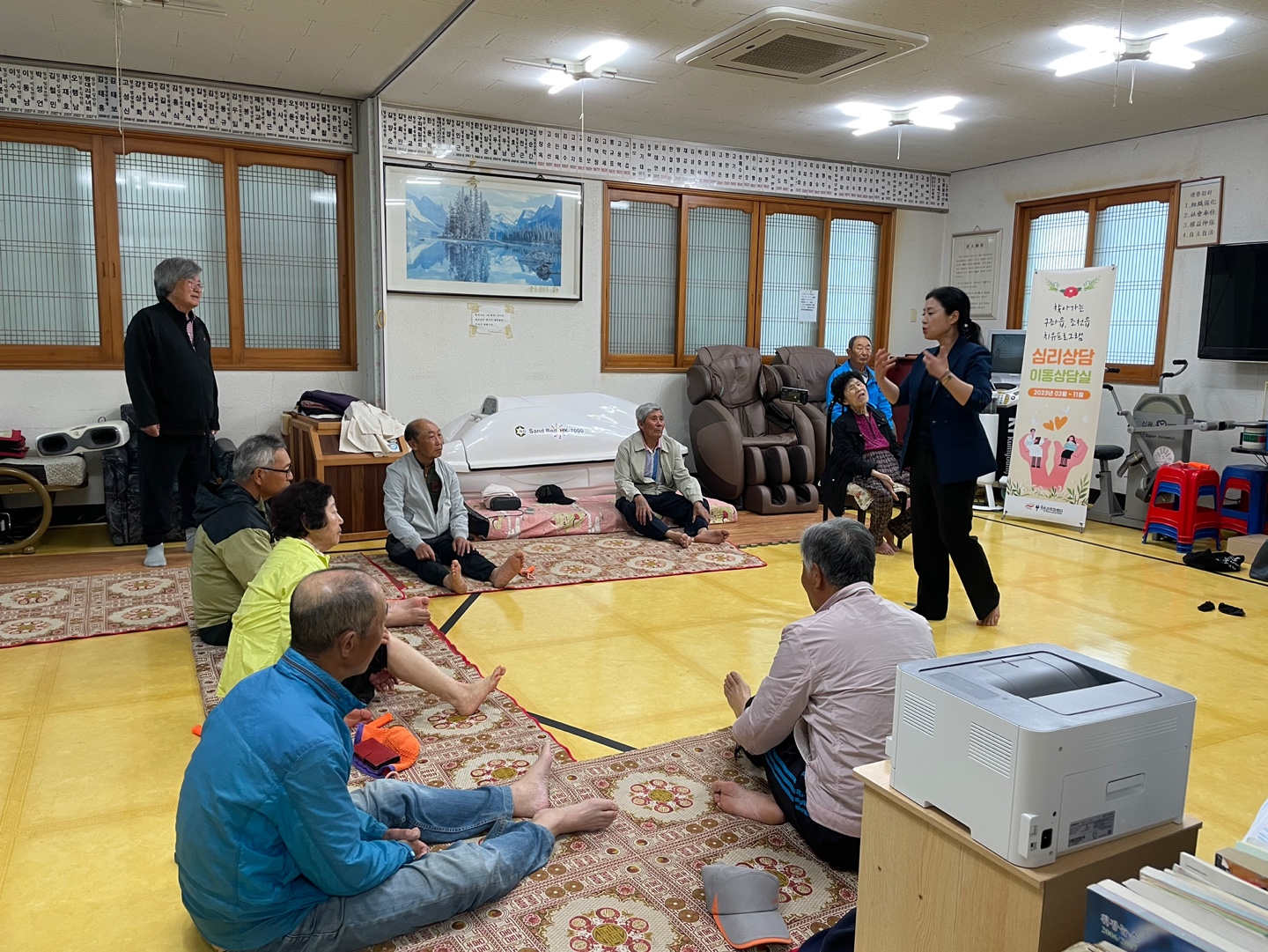 +++ An healing outreach program.
+++ An healing outreach program.
Looking forward to the state-led center for the healing of Jeju 4·3 trauma
In 2020, the Act on the Establishment and Operation of the National Center for the Healing of Trauma from State Violence was enacted.
The first sentence of the reason for the proposal mentions the Jeju 4·3 and the May 18 Gwangju Democratization Movement. It is noteworthy that the inclusion of Jeju 4·3 was made possible by the efforts of Jeju Special Self-Governing Province and the Jeju 4·3 Peace Foundation.
Scheduled to finally open in 2024, the national center must be meticulously prepared, with a focus on operational independence, financial stability, and specialized healing programs.
Operational independence
Healing trauma and rehabilitation of victims of state violence is closely linked to discovering the truth of what happened in the past and restoring honor to the victims, ultimately reducing the social stigma. This involves exposing the wrongdoings and misdeeds of a particular regime, meaning that the operation of the center is likely to be politically influenced. Therefore, it is crucial to ensure that the center remains strictly neutral in the political sense.
Financial stability
Trauma healing is a long-term program for treatment and rehabilitation, which relies on psychological counseling. Victims of traumatic experiences are less likely to open up if the counseling process fails to be conducted in a stable environment and an atmosphere of respect, which may otherwise even worsen their conditions. Therefore, it is very important for trauma healing centers to secure stable financing and be maintained for a long period of time in a comfortable environment.
Specialized healing programs
Running a therapeutic program for trauma resulting from state violence requires therapists and psychotherapists to have a deep understanding and knowledge of trauma inflicted on victims of past wrongdoings as well as of general trauma. In this sense, those involved in healing programs for victims of state violence workers need expertise specific to related cases. This is because the institution needs to create a system for building and accumulating specialized content in healing programs.